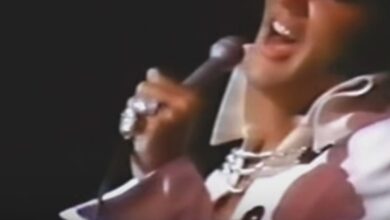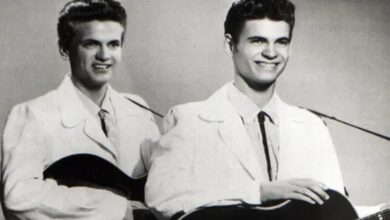The Statler Brothers’ ‘More Than a Name on a Wall’ Pays a Touching Tribute to Fallen Soldiers
When The Statler Brothers released More Than a Name on a Wall in 1989, it struck a powerful emotional chord across the country. Featured as the fourth single from their compilation album The Greatest Hits, the song explored the sorrow and dignity felt by families who had lost loved ones in war. Though it didn’t soar to the very top of the country charts, its emotional resonance gave it an enduring place in country music, marking it as one of the group’s most touching and unforgettable contributions.
Though known collectively as The Statler Brothers, none of the members were actually brothers or named Statler. The original lineup—Harold Reid, Don Reid, Phil Balsley, and Lew DeWitt—began their musical journey in Staunton, Virginia, during the 1950s as a gospel group. Their evolution into country music brought with it a distinct sound: tight vocal harmonies, relatable lyrics, and a warm, narrative style that made their music both accessible and emotionally rich. By the time they introduced More Than a Name on a Wall, their influence was already deeply embedded in the fabric of country music.
Songwriter Jimmy Fortune, who stepped in to replace Lew DeWitt in the early ’80s due to health reasons, was the mind behind this solemn piece. Drawing inspiration from the Vietnam Veterans Memorial in Washington, D.C., Fortune crafted a story told from the perspective of a grieving mother. The lyrics focus on her prayer that her son be remembered not merely for his name on a monument, but for the life he lived and the person he was. Fortune’s writing distilled the pain and pride experienced by countless families into a few haunting verses.
Produced by Jerry Kennedy, the recording leaned into simplicity to elevate the song’s emotional depth. Instead of elaborate instrumentation, the arrangement was modest—acoustic guitars, soft background orchestration, and the group’s signature vocal blend created an almost sacred atmosphere. Their harmonies didn’t just complement the lyrics; they carried them, layering sorrow, reverence, and quiet strength into each note. The restraint in the production ensured that every word was heard, every emotion felt.
While it peaked at No. 6 on the Billboard Hot Country Singles & Tracks chart, the emotional impact of More Than a Name on a Wall far exceeded its chart placement. Listeners who had personal ties to military service, particularly Vietnam veterans and their families, found solace and connection in the song. It soon became a fixture at patriotic gatherings, funerals, and remembrance ceremonies, where it served as both tribute and comfort to grieving hearts.
The song also marked a shift in how country music addressed war and its aftermath. While many patriotic tracks celebrate service and sacrifice, More Than a Name on a Wall approached the subject through the lens of personal grief. There were no battle scenes or flags waving—only a mother’s quiet pain and her wish that her child be remembered as a whole person. In doing so, the song provided a deeper, more introspective take on the human consequences of conflict.
This release added another layer to the Statlers’ already wide-ranging catalog. Known for songs filled with nostalgia and clever historical references, this track brought a serious emotional tone to their discography. It reaffirmed their storytelling skills—not just in recounting childhood memories or American traditions, but in conveying the deepest human emotions with grace and humility. Fans who had grown with the group over the decades saw this song as evidence of their continued artistic growth.
Since its release, More Than a Name on a Wall has become a cherished piece of remembrance music, particularly during Memorial Day and Veterans Day commemorations. Its popularity endures not through chart resurgence but through emotional tradition. Artists have performed it in tribute concerts and public ceremonies, yet none have matched the quiet power of the original recording by The Statler Brothers, which remains unmatched in sincerity and delivery.
The legacy of the song is deeply connected to the Vietnam Veterans Memorial itself. Many visitors to the wall recall the lyrics playing in their minds as they scan for familiar names. The song not only mirrors the setting but amplifies its emotional weight, reminding listeners that behind each name is a life lived, a family affected, and a sacrifice made. It serves as an audio companion to a physical place of mourning and remembrance.
As The Statler Brothers neared the end of their career, retiring in 2002, More Than a Name on a Wall remained one of their most enduring fan favorites. Even after decades of hits, this particular song stood out for the sheer emotional depth it conveyed. Audiences continued to request it at live shows, and it maintained a unique presence in their legacy—a moment where their harmonies helped carry a national weight of sorrow and gratitude.
Even now, more than three decades later, the message of More Than a Name on a Wall holds strong. The sorrow it captures, the remembrance it inspires, and the grace with which it delivers its message continue to move people across generations. Its legacy endures not just through recordings and performances, but in the quiet moments when listeners reflect on the lives lost—and remember that every name has a story.



